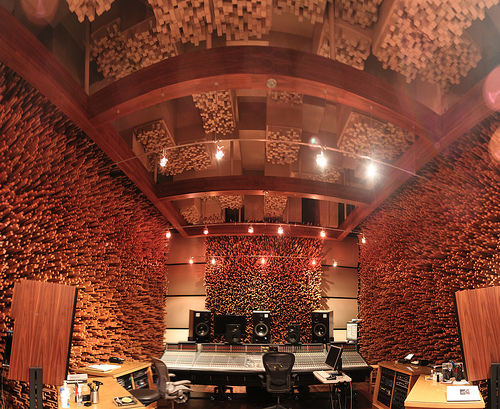etheory
Well-known member
Shameless reposting a link that Jeff put on FB:

This is Studio C at Blackbird Studios in http://www.blackbirdstudio.com/#/home/
This is the most widespread use of such a surface I've seen, not that I go to many actual studios....
Does anyone know what the relevance of the heights in the pattern is?
Are they totally random? Stochastically random? Quasi-random? Halton points? Hammersely points? Perlin Noise? None of the above?
I'm quite curious. My full-time job is writing physically-based rendering software and I spend a lot of my time studying these types of patterns. I'm curious if there are any other mathematicians in the house that might be able to shed some light on the physics behind which patterns give the best absorption.
Does anyone have a story about a before and after of installation of a large surface area of these? If so, are they really THAT good?
thanks!

This is Studio C at Blackbird Studios in http://www.blackbirdstudio.com/#/home/
This is the most widespread use of such a surface I've seen, not that I go to many actual studios....
Does anyone know what the relevance of the heights in the pattern is?
Are they totally random? Stochastically random? Quasi-random? Halton points? Hammersely points? Perlin Noise? None of the above?
I'm quite curious. My full-time job is writing physically-based rendering software and I spend a lot of my time studying these types of patterns. I'm curious if there are any other mathematicians in the house that might be able to shed some light on the physics behind which patterns give the best absorption.
Does anyone have a story about a before and after of installation of a large surface area of these? If so, are they really THAT good?
thanks!


